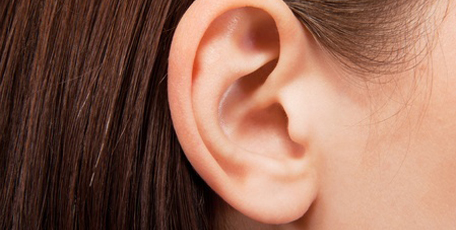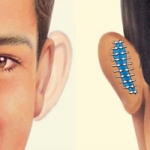Otoplasty is surgery on the ears is more often performed. It is an intervention requested mostly by teenagers and even children, psychological and social problems resulting from this deformity.

Who is the ideal candidate to undergo otoplasty?
Most plastic surgeons recommend that parents observe the child’s behavior in relation to his prominent ears. Do not insist on the surgery until the child so desires. Children who are unhappy with their ears and want surgery, more cooperative during surgery and are happier with the result.
Both children and adults may be uncertain about the outcome of otoplasty. It has to be noted that an improvement is to be achieved, not absolute perfection. If you comment clearly with your plastic surgeon, both the procedure and your expectations and choices, the results are very satisfactory.
If you are considering whether to submit to an otoplasty, in Cànons Clinics, centers specializing in Cosmetic Medicine Surgery and get all the basic information about otoplasty, when indicated, how it’s performed and what results you can expect.
In the first consultation, the plastic surgeon will perform an assessment of your needs and will recommend the most effective technique for your particular case.

Appearance before surgery

Appearance after surgery
What is otoplasty?
It consists of prominent ears repositioned, removed or in a position protruding normal, closer to the head. Most of the time, but only one ear appears abnormal, involving both to get a better symmetry.
Generally, a small incision is made behind the ear, thus leaving a scar almost invisible. From this incision is remodeled and sculpts the cartilage of the ear, causing it to fold back. Internal points can be used to maintain the new shape. Sometimes it can be necessary to remove a portion of the ear cartilage for a more natural look. Finally, removal of a wedge of skin from the back of the ear and sutured behind the ear.

An otoplasty usually lasts approximately 90 minutes, although complex cases may take longer. The technique used will depend on each specific clinical case.
They place a bandage that models the ears so that they are in the correct position. Once removed, about a week, the stitches are removed and placed an elastic band for about two weeks and for two weeks at night to avoid during sleep ears are folded forward. The operation result is permanent.
– See more at: http://www.Cànons Clinics.es/otoplasty/?lang=en#sthash.1ruIAykm.dpuf
Will I see any 3D simulation before otoplasty surgery?
In our centers, specialized in Cosmetic Medicine and Surgery, offer the possibility to show through a new 3D program (CRISALIX) various three-dimensional simulations otoplasty to analyze a personalized and medically all aspects you want to improve, performing only previous photographs, where you get an idea about always, how you’ll be later, involved a variety of factors.
What type of anesthesia is used in otoplasty?
If the child is young, the plastic surgeon will recommend performing surgery under general anesthesia. For older children and adults, be employed or associated local anesthesia, no sedation, so you are awake during the surgery, but relaxed.
Depending on the type of anesthesia, the procedure will be performed in ambulatory regime or, well you stay in the hospital a few hours.
In people over age 18 who are not squeamish, you can perform well under local anesthesia.
How will the back to normality be?
Mostly, both children and adults, are well within a few hours of surgery. It will place a bandage around his head straight after surgery.
The ears may hurt a bit the first few days, but is relieved with local cold easily and, following the pattern of analgesics and anti-inflammatories. In a few days will be changed by a lighter dressing similar to a headband.
It is important to follow your plastic surgeon about the use of the dressing, especially at night. Should be avoided during the first month any activity that can bend the ears.
How do I prepare the surgery?
The doctor will give you instructions on how to prepare for surgery, including guidelines to keep on shooting or suppressing medications, vitamins, iron supplements, food, liquid and snuff.
Make sure also that a family member or companion can take you home when you are to be discharged and, if necessary, can help a few days.
What precautions should I take?
In order to limit the risk of bleeding and bruising have to avoid taking in the 7 days before the procedure antiplatelet drugs such as aspirin, dipyridamole, ticlopidine… as well as in the 3 days prior to taking NSAIDs like Ibuprofen antiplatelet effect, Diclofenac, indomethacin, piroxicam, naproxen…
